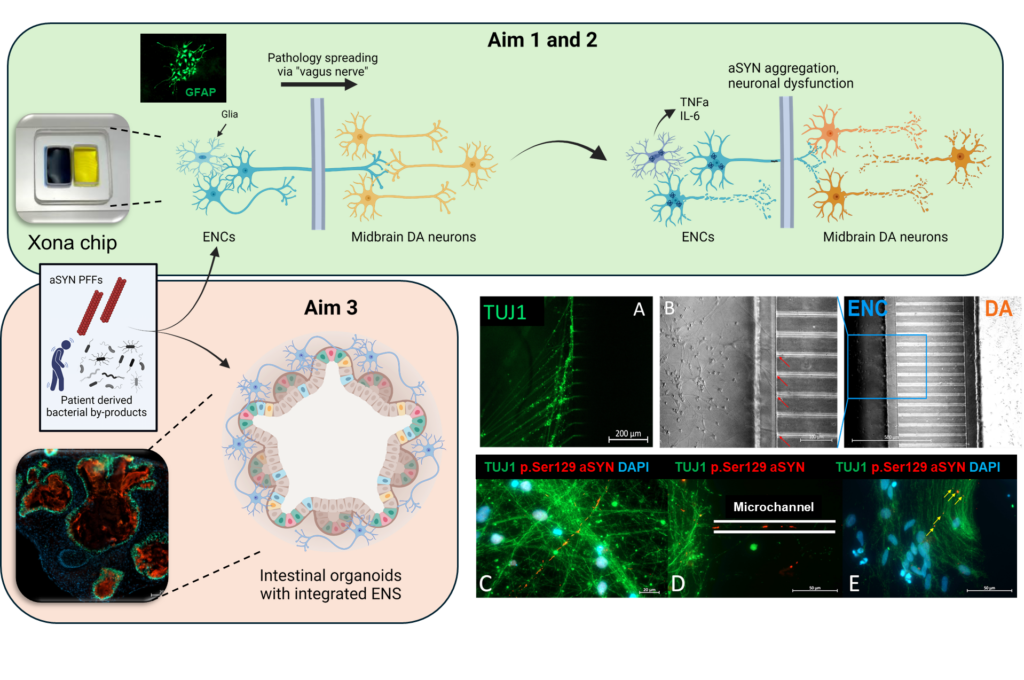Microbiota-gut-brain-axis in Parkinson’s disease
The methodology employed in our study entails the use of models based on the gut-brain axis, incorporating human induced pluripotent stem cell-derived enteric neural cells and midbrain dopaminergic neurons, which are cultured on a microfluidic chip. Furthermore, human intestinal organoids will be used to model the gut in a more physiologically relevant context. We will assess the impact of alpha-synuclein pathology on the cells using healthy and PD donor cells. In addition, we will scrutinize the role of dysregulated gut microbiota and their mutual interplay with gut epithelial and neuronal cells and elucidate their role in alpha-synuclein pathology initiation as well as transfer to the brain.

Figure: Conceptual figure of the project and preliminary data: (A-B) Representative images of enteric neurons forming axonal processes through the microchannels towards midbrain dopaminergic neurons on the gut-brain-axis chip. (C-D) Fluorescence images showing phosphorylated alpha-synuclein inclusions which are transferred with axonal processes to the midbrain dopaminergic neurons (E).
Publications
Syvänen, V., Koistinaho J. & Lehtonen Š. (2024). Identification of the abnormalities in astrocytic functions as potential drug targets for neurodegenerative disease. Expert Opin DrugDiscov. 2024 May;19(5):603-616. https://doi.org/10.1080/17460441.2024.2322988
Albert, K., Kälvälä, S., Hakosalo, V., Syvänen, V., Krupa, P., Niskanen, J., Peltonen, S., Sonninen, T-M. & Lehtonen, Š. Cellular Models of Alpha-Synuclein Aggregation: What Have We Learned and Implications for Future Study, Biomedicines. 2022 Oct 20;10(10):2649. https://doi.org/10.3390/biomedicines10102649